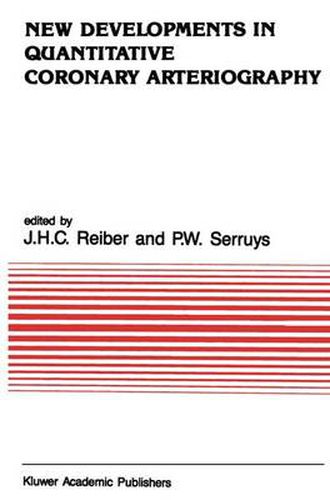Readings Newsletter
Become a Readings Member to make your shopping experience even easier.
Sign in or sign up for free!
You’re not far away from qualifying for FREE standard shipping within Australia
You’ve qualified for FREE standard shipping within Australia
The cart is loading…






This title is printed to order. This book may have been self-published. If so, we cannot guarantee the quality of the content. In the main most books will have gone through the editing process however some may not. We therefore suggest that you be aware of this before ordering this book. If in doubt check either the author or publisher’s details as we are unable to accept any returns unless they are faulty. Please contact us if you have any questions.
There are few techniques that have influenced therapeutic strategies in modem cardiology to a similar extent as coronary arteriography. Bypass surgery as well as transluminal coronary angioplasty would not have been possible without coronary angiography serving as a ‘midwife’ in their evolu tion. Despite the widespread and long-standing use in clinical practice, however, the interpretation of coronary angiograms has not changed very much since the early days. Most angiogr~s are still reviewed in a visual and semi-quantitative and thus often very subjective way. In the face of an almost exploding field for interventional catheterization including thrombolysis, balloon dilatation, and other rapidly evolving techniques for transluminal revascularization or recanalization, a more detailed and quantitative analysis of coronary arteriograms is urgently required. In addition to the delineation of coronary morphology, we need dynamic and functional information about flow and perfusion to understand the physiological significance of anatomic abnormalities. Coronary arteriography contains and can provide most of this information. With the application of appropriate techniques, it can be made available in the catheterization laboratory even during the patient’s investiga tion, thus facilitating and improving clinical decision making. Objective and reproducible analysis will furthermore enhance our understanding about the pathophysiology of coronary disease.
$9.00 standard shipping within Australia
FREE standard shipping within Australia for orders over $100.00
Express & International shipping calculated at checkout
Stock availability can be subject to change without notice. We recommend calling the shop or contacting our online team to check availability of low stock items. Please see our Shopping Online page for more details.
This title is printed to order. This book may have been self-published. If so, we cannot guarantee the quality of the content. In the main most books will have gone through the editing process however some may not. We therefore suggest that you be aware of this before ordering this book. If in doubt check either the author or publisher’s details as we are unable to accept any returns unless they are faulty. Please contact us if you have any questions.
There are few techniques that have influenced therapeutic strategies in modem cardiology to a similar extent as coronary arteriography. Bypass surgery as well as transluminal coronary angioplasty would not have been possible without coronary angiography serving as a ‘midwife’ in their evolu tion. Despite the widespread and long-standing use in clinical practice, however, the interpretation of coronary angiograms has not changed very much since the early days. Most angiogr~s are still reviewed in a visual and semi-quantitative and thus often very subjective way. In the face of an almost exploding field for interventional catheterization including thrombolysis, balloon dilatation, and other rapidly evolving techniques for transluminal revascularization or recanalization, a more detailed and quantitative analysis of coronary arteriograms is urgently required. In addition to the delineation of coronary morphology, we need dynamic and functional information about flow and perfusion to understand the physiological significance of anatomic abnormalities. Coronary arteriography contains and can provide most of this information. With the application of appropriate techniques, it can be made available in the catheterization laboratory even during the patient’s investiga tion, thus facilitating and improving clinical decision making. Objective and reproducible analysis will furthermore enhance our understanding about the pathophysiology of coronary disease.